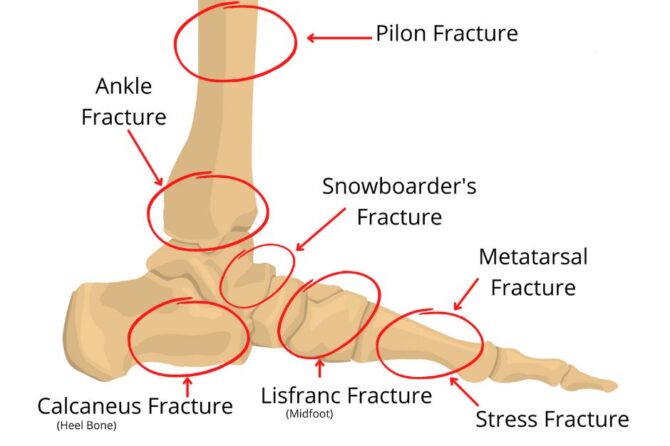
BREAK-ing Down Foot & Ankle Fractures
One of the injuries that we see increase in frequency during the winter months are foot and ankle fractures. Slippery conditions can trigger a fall, which is a common cause of these injuries. Winter sports such as skiing, snowboarding, and ice skating also predispose patients to foot and ankle fractures. In fact, something called a “snowboarder’s fracture” is a specific injury that happens because of the position of the foot and ankle on a snowboard.
Foot and ankle fractures are some of the most debilitating injuries that we see in the ankles and feet. Unfortunately, there are also short- and long-term effects.
Many breaks will lead to some sort of arthritis in the adjacent joints, which means the cartilage was damaged during the injury. The majority of patients who sustain an ankle fracture will go on to develop ankle arthritis. This, more than any other area of the body, can lead to mobility issues.
Even in a well healing broken bone, it is paramount to protect and immobilize the area to prevent long term consequences. This usually means wearing a cast or boot beyond the time you are feeling better.
Having a foot and ankle fracture is never easy, as breaks can impact things from driving to even standing in place. As specialists in foot and ankle trauma, we provide ourselves with providing the best and most evidence-based care. We also understand the importance of physical therapy during the healing process.
We are fortunate to offer patients x-rays and physical therapy on site, all with the goal of making the healing process as easy and efficient as possible. Although foot and ankle fractures can have devastating implications on a patient’s immediate quality of life, we always aim to get you back in the game, or back on your feet, as soon as possible.
Leave a reply